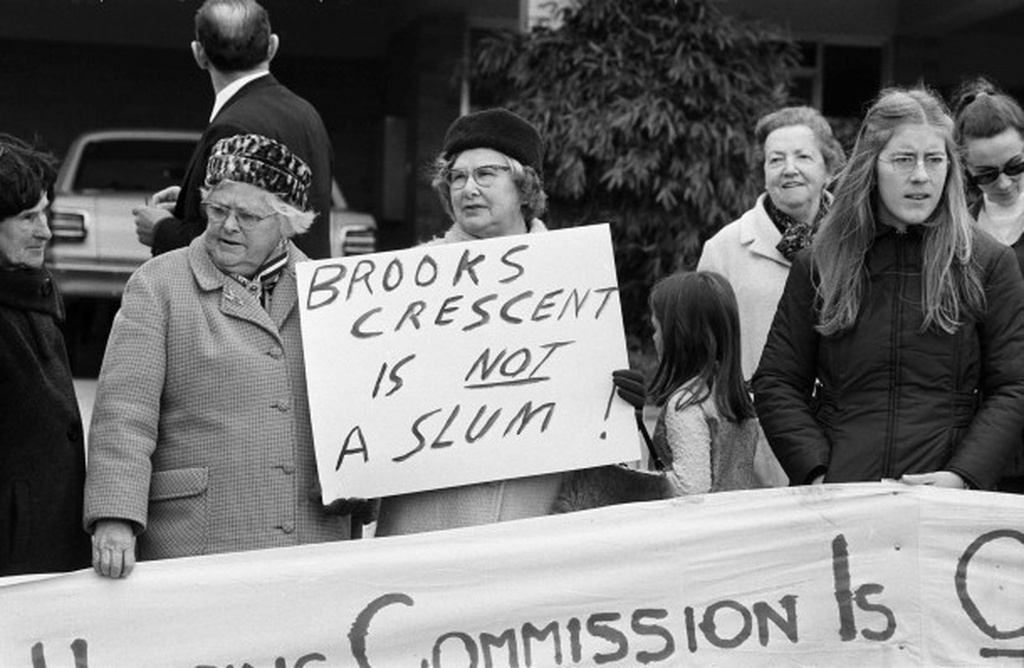
Brooks Crescent was formed around the boundaries of a small quarry used to mine stone in the 1850s, and as with many other early quarries in Melbourne, this was infilled and turned into a park once the supply was exhausted. In 1970, Brooks Crescent became one of a wider set of areas slated for demolition as part of Housing Commission of Victoria projects of “slum clearance” which sought to demolish lower-density inner-Melbourne housing with high rise construction. While many of these demolition projects attracted protests, such as the demolition of large areas of housing to construct the Atherton Gardens estate on Brunswick and Gertrude Streets, Brooks Crescent was unusual in that it successfully halted demolition. This included a range of individual and collective protest, including the formation of North Fitzroy Resident’s Action Committee, which worked with the Committee for Urban Action and other local Residents’ Action Groups to stage protests and attempt to prevent initial works. Individual residents also vocally refused to sell or vacate their properties. By 1977, the plans for the site were abandoned. These protests have been widely interpreted as leading to HCV shifting its approach away from “slum clearance” policies in Melbourne.
by laurenpiko on March 2, 2019Please login to comment on this item